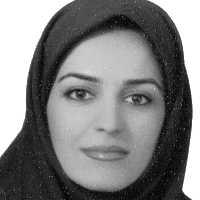Critical evaluation of the presentational variables in artistic-architecturalinstitution and the public architecture, (2008-2018)
Residential architecture is not only literal words based on specific arrays and techniques, rather, it is a kind of colloquial language in which social contradictions and distinctions are exhibited with the same oral language. The presentational variable is one of the influential factors in the architectural body. Nowadays, dramatic architecture in society as a public affair is a barrier to policymaking with a cultural challenge in the field of architecture. From the point of view of culturalism, presentational variables are associated with culture, while culture, affected by time and field, can be derived from each of the cultural layers or areas; ideological culture (Culture of specialist forces, books, and articles), custom culture (Common culture), elite culture (Imported culture) or foreign culture (Religion and Nationality). Perceiving the relation between the presentational variable and architecture is a part of perceiving the architecture-culture relation. On the other hand, the difference between academic and daily conversation is displayed in the form of the building's skin by entering the distinction which has shown itself in “language”. The explanation of this cultural category in the duality of opinion and action on today's exterior body of housing architecture will assist the audiences in understanding it more accurately in the direction of today's housing pathology. Therefore, in the present study, the indicators of the presentational variable have been explained and then investigated on the exterior body of contemporary Iranian housing.
First, the seven proposed indicators of the presentational variables on the exterior body of a building have been explained according to variations of research literature and reasoning/qualitative analysis using the mixed method, and then the indicators and characteristics, in selected buildings from the domain of “artistic institution”, including selected buildings in architectural competitions, the domain of “public” architectures namely architectures of the artificial texture of society has been investigated using mean comparison test. Data collection for the statistical population of the first and second categories has been done by library and field methods, respectively, and the sampling model of both categories has been purpose.
Among the seven indicators of the presentational variable (modernism, prodigal, isolated, dominant, bourgeois, seducer, rupture of culture), there has been a significant difference in five indicators among the buildings of these two domains; so the most effective indicators of the presentational variable in the first domain means indicators of "isolated" and "modernism" have been the least effective indicators in the second domain and conversely, indicators of "rupture of culture" and "bourgeois" have considered as the most effective indicators in the second domain while they have considered as the least effective indicators in the first domain.
This lack of congruence has revealed an incompatible situation as it seems that public architecture has not been subordinate to the selected buildings of institutions of society and this institution has not shown the required field – according to Bourdieu – in shaping the exterior body of housing in order to gain public obedience.
-
A Study Of Realistic Data-Based Architecture
Hadi Farhangdoust *,
Raf Quarterly Scientific Journal of Architecture, Restoration and Urbanism, -
Advanced Informetrics Framework Based on the Theoretical Principles of Architecture and Urban Planning along with Achieving Data-Driven Scientometrics Functions Based on: Indicator, Index, Aspects, Product and Classification
Hadi Farhangdoust*, Toktam Hanaee,
International Journal of Architectural Engineering & Urban Planning, Oct 2024


